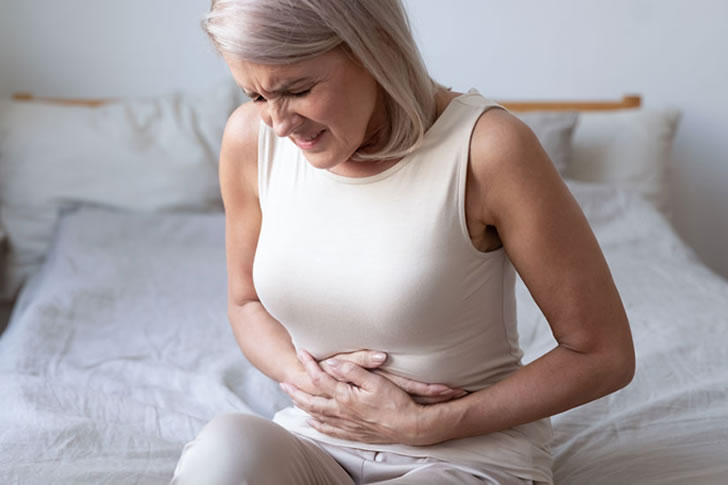First Signs Of Crohn’s Disease That Many Females Tend To Ignore
Crohn’s disease is a chronic inflammatory condition that affects the digestive tract. Many females often overlook early signs, leading to delayed diagnosis and treatment.

Understanding Crohn’s Disease and Its Impact on Women
Crohn’s disease can affect anyone, but its impact on females can be particularly challenging due to hormonal changes, pregnancy, and the unique symptoms women experience. Recognizing the first signs is crucial for early intervention and better management of the disease.
Common Early Signs of Crohn’s Disease in Females
- Abdominal Pain: Persistent or recurring pain in the lower abdomen is often mistaken for menstrual cramps or other common conditions.
- Fatigue: Chronic fatigue is a common but easily overlooked symptom. It can be dismissed as stress or general tiredness, but in the context of Crohn’s, it indicates the body’s struggle with inflammation.
- Weight Loss: Unexplained weight loss, despite normal eating habits, can be a red flag for Crohn’s disease. It often occurs due to malabsorption of nutrients.
- Diarrhea: Frequent diarrhea that lasts for weeks and doesn’t improve with over-the-counter medications may indicate Crohn’s disease.
- Anemia: Iron deficiency anemia, leading to symptoms like pale skin, dizziness, and shortness of breath, is common in women with Crohn’s due to internal bleeding and malabsorption.
- Joint Pain: Some women experience joint pain, which can be mistaken for arthritis or other conditions, but it may be related to the inflammation caused by Crohn’s.
- Skin Issues: Rashes, ulcers, or other skin conditions can be an early sign of Crohn’s disease, often misdiagnosed as unrelated dermatological issues.
- Eye Inflammation: Symptoms like redness, pain, and blurred vision can occur, but are often not linked to Crohn’s by patients.
- Mouth Sores: Painful ulcers or sores in the mouth that persist can be an early indicator of Crohn’s.
- Irregular Menstrual Cycles: Women may experience changes in their menstrual cycles, which can be easily attributed to stress or other factors, rather than underlying Crohn’s disease.
Bullet List: Risk Factors for Crohn’s Disease in Women
- Family History: Having a close relative with Crohn’s disease increases your risk.
- Smoking: Smoking is a known risk factor that can exacerbate symptoms.
- Age: Most people are diagnosed with Crohn’s in their late teens to early thirties, but it can occur at any age.
- Ethnicity: People of Ashkenazi Jewish descent are at higher risk, though Crohn’s affects all ethnicities.
- Geography: Those living in urban areas and industrialized countries have higher incidences of Crohn’s disease.
Q&A: Common Questions About Crohn’s Disease in Women
Q: How is Crohn’s disease diagnosed?
A: Diagnosis typically involves a combination of blood tests, stool tests, endoscopy, colonoscopy, and imaging studies to detect inflammation in the digestive tract.
Q: Can Crohn’s disease affect pregnancy?
A: Yes, Crohn’s can affect pregnancy, but many women with the disease have healthy pregnancies. It’s essential to work closely with healthcare providers to manage symptoms.
Q: Is Crohn’s disease curable?
A: There is no cure for Crohn’s disease, but with proper treatment, many people can achieve remission and lead healthy lives.
Q: What treatment options are available for Crohn’s disease?
A: Treatment includes anti-inflammatory medications, immune system suppressors, antibiotics, and sometimes surgery to remove damaged portions of the digestive tract.
Q: How can diet impact Crohn’s disease?
A: While diet alone can’t cure Crohn’s, certain foods can trigger symptoms. A balanced diet tailored to your needs can help manage symptoms and improve quality of life.
Chart: Comparison of Crohn’s Disease Treatment Options
| Treatment Type | Medications | Benefits | Side Effects | Approximate Cost (USD/Month) |
|---|---|---|---|---|
| Anti-inflammatory drugs | Mesalamine | Reduces inflammation in the gut | Headache, nausea | 300 – 500 |
| Immune system suppressors | Azathioprine | Suppresses immune response | Increased infection risk, liver issues | 200 – 400 |
| Biologics | Infliximab | Targets specific proteins in the immune system | Risk of infection, allergic reactions | 1,500 – 3,000 |
| Antibiotics | Metronidazole | Treats and prevents infections | Nausea, metallic taste | 30 – 60 |
| Corticosteroids | Prednisone | Rapid reduction of inflammation | Weight gain, mood swings | 10 – 50 |
| Surgery | Resection, Strictureplasty | Removes damaged sections of the intestine | Risk of complications, recovery time | Varies (one-time cost) |
| Nutritional Therapy | Enteral Nutrition | Nutrient-dense liquid diets | Requires commitment, not always effective | 600 – 1,200 |
| Pain relievers | Acetaminophen | Relieves pain without gastrointestinal irritation | Liver damage in high doses | 5 – 20 |
| Iron Supplements | Ferrous Sulfate | Treats anemia caused by internal bleeding | Constipation, stomach upset | 10 – 30 |
| Probiotics | Lactobacillus | Supports gut health | Mild bloating | 20 – 50 |
Conclusion
Recognizing the early signs of Crohn’s disease, especially in women, is critical for timely diagnosis and treatment. Understanding these symptoms and knowing when to seek medical advice can make a significant difference in managing this chronic condition effectively.
Sources







Recent Comments